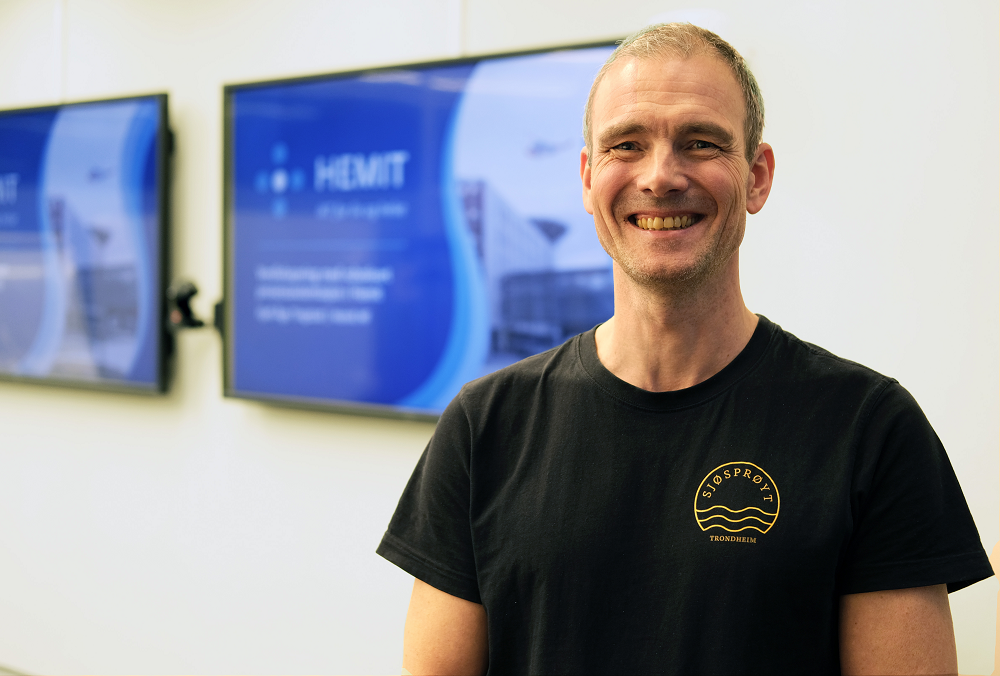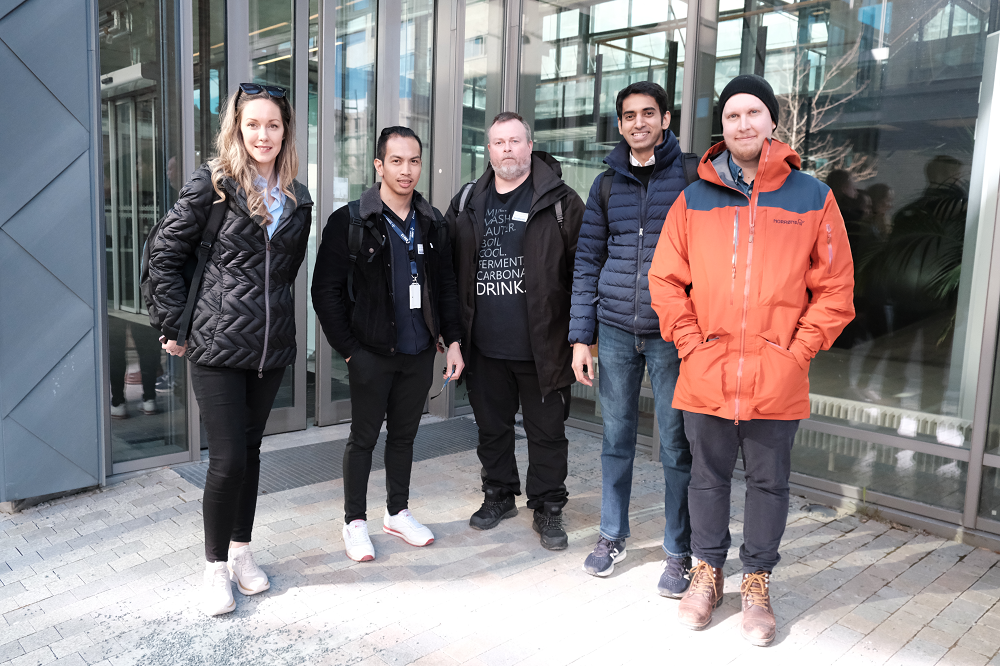
Region:Europe
Industry:Healthcare
Client:Hemit
Robots help central Norway’s hospitals put patients first

20
robots
4.701
million transactions handled
Client Overview
Central Norway Regional Health Authority's IT department, Hemit HF, supports specialized services across four healthcare organizations. Over 24,000 professionals rely on Hemit HF’s work, which aims to improve patient care with innovative technology while making sure all critical systems are available non-stop in hospitals.
Norway has a universal healthcare system, which is the envy of many nations. The country’s citizens live longer and healthier lives than most other Europeans, with improvements in wellbeing partly down to preventative action and treatments.
Running such an effective organization isn’t down to luck. It’s thanks to excellent funding and a willingness to innovate and explore new ideas, which is where our story starts. “In Norway, we have specialist clinicians with a remit to experiment and research future treatments and ways of working,” says Kjell-Åge Tingstad, product owner at Hemit.
“About four years ago, one of those clinicians started a project at St Olav’s hospital in Trondheim. External contractors automated the addition of lab biopsy information to an IT system,” Tingstad adds, who’s responsible for bridging the gap between technology expertise and clinical understanding at Hemit.

It was an instant success and shone a spotlight on automation, drawing attention from across the authority. Rune Gjølme, senior IT specialist, picks up the story, saying, “It was a one-off project, initiated from the bottom up, but the results showed automation was worth investing in. This led to funding from the health authority to use the technology throughout the organization.”
Building in-house expertise
Hemit quickly hired two developers to understand how automation could improve process management. One of those is Jeevith Hegde, now a senior developer at Hemit. “We arrived to several requests for automation. So, we began exploring the code that had been developed for the initial implementation. We looked at it and realized it wasn’t going to work for the entire organization. It hadn’t been developed with the healthcare sector in mind. It was our job to change this.”
The team got to work.
We spent the first two months exploring UiPath software and creating a plan to deal with the backlog of automation requests. We met every Thursday to understand what tools we had, what we needed and the best way forward, spending the rest of the time building solutions.
Jeevith Hegde • Senior Developer at Hemit
The most important step was the creation of an evaluation tool that could prioritize the processes earmarked for automation. “We put the candidate processes through the tool to understand what we could achieve. It also ranked them, giving us a plan.”
“We put time into explaining to other people what we were doing and how automation could help. Although the technology had made an initial splash, very few people knew we existed, so we had to knock on a lot of doors,” Tingstad adds. “We ran seminars and created a form for any employee to suggest an automation. This created a pipeline of work and built awareness of the team.”
Accelerated development
Having built the right tools and ability, Hegde and his colleagues began on the second automation project. As he starts explaining, he cracks a smile, “It was easy. Very simple,” he laughs. In reality, it was far from straightforward.
“We began with what we thought would be a quick automation,” he recalls. To explain further, he says, “People sometimes change their GP, yet this information isn’t always updated on a patient record – known as a register in Norway – because the two systems that hold the data aren’t integrated. This led to healthcare professionals getting incorrect information or data going where it shouldn’t.”
The new robot aimed to add the correct GP information from a central health system to a patient record. “It was a steep learning curve. Within a couple of months, we could see the scale of the job,” Hedge remembers. “There were a huge number of records that needed to be updated. At the same time, there were lots of exceptions and loopholes. For example, temporary GPs don’t have an ID in the system, so we couldn’t add the details.”
Slowly, but surely, the team built the robot, creating eight different scenarios for it to manage. Despite its size and complexity, it was another resounding success. Importantly, it’s still in operation, updating records every day.
Taken together, until now, the first two automations alone have dealt with 3,510,981 cases and saved huge amounts of time. If employees had completed the work manually, it would have taken 21,499 hours.
How big do you want to get?
Reflecting on the success, Tingstad makes the point that the possibilities for automation are endless. “Having launched the second robot, we looked at our backlog and there was no end of processes to work on.”
“The question was, how big did we want to go? We have 1,500 applications running in Hemit and few of them integrate. Robots could have worked between all of them. We’ve decided to stay focused for now and have grown the team to eight people so far.”
Today, there are 20 robots in total. When questioned about the impact they make, Hegde has the number at his fingertips.
There have been 4.701 million transactions handled and the automations do the work of 73 full-time employees.
Jeevith Hegde • Senior Developer at Hemit
However, Hegde is quick to point out that the team doesn’t measure itself on these metrics alone. “We also consider qualitative measures, such as error reduction and the knock-on impact, such as stopping data breaches and improving quality of subsequent robot or manual processes. In some cases, work simply wouldn’t be done without automation.”
For example, when the regional health authority moved its IT into the cloud, old Microsoft files needed updating. A third robot automated the process, putting old documents in the hands of cloud users. Without the automation, this wouldn’t have been possible.
Other robots are now supporting front-line staff, too, according to Hegde. “Before they come to hospital, patients are sent health assessment forms which are given to nurses prior to an appointment,” he says. “This captures information such as how the patient is feeling and what medication they’ve taken. Staff had previously completed this process manually. Now its automated, with the forms sent to nurses and key information added to a patient admin system.”
A warm welcome
Thanks to the obvious benefits to healthcare professionals, robots have received a warm welcome from staff. Gjølme re-enters the conversation, saying, “Developers work in close cooperation with process owners and subject matter experts. This means they’re involved from day one and can see how robots will help. We’re democratizing automation,” he adds.
To avoid any worry about the software, we’ve created advocates within the hospitals and often use case studies to educate staff about how automation has helped others. We also have an annual RPA champion. Last year, the winner said we’d made a big difference.
Rune Gjølme • Senior IT Specialist at Hemit
At this point, Hedge chips in, saying, “We’ve also been careful with budgets. We secured funding centrally and never exceed it. This means we can offer robots to frontline staff without ever having to talk about money.” Just like the Norwegian healthcare system, which is free at the point of need, so are the robots.
“We focus on the need for automation, not the expense,” Hedge emphasizes. “And as a team, we strive to be cost effective. We’ve committed to delivering 10 times more than we cost.”
Coming developments
The automation team has a busy schedule to deal with. It’s growing and helping new developers get up-to-speed. Gjølme says, “We are currently developing automated tests for an ambulance management application.”
Which brings him to a wider point. Software testing can often rely on manual processes. Each time a developer creates a new piece of software, it needs to be put through its paces to ensure there are no glitches. It takes time and is labor-intensive. “We’re looking at how robots can speed it up,” Gjølme adds.
When asked what advice they’d give to other healthcare providers exploring automation, the three experts from Hemit all have something to say. Hegde begins with, “Keep it simple,” recalling the complex robot he built to update GP details.
“Also, contact staff who need help. Make sure they understand what automation can offer and get their commitment.” He finishes by adding, “The funding issue is vital too. Get it in place first so you never have to ask frontline staff about who will pay for a project.”
Gjølme is next, adding, “Make it as easy as possible for developers to do their jobs. Let them develop and don’t add other tasks to their workload. Also, keep close to the process owners and communicate well with them.”

Tingstad concludes by saying, “Have reports and data about your work. Ensure its easily available and make the CFO read it. Once management see the results, they’ll take note.”
But the last word goes to Gjølme who reflects on the pioneering spirit and dedication to innovation that kickstarted this automation journey. “The best automation candidate is the one you’ve not developed yet,” he smiles.
Because only through new ideas and exploration will Hemit unleash the true potential of automation. And in doing so, it’s helping the Norwegian healthcare system put patients first while remaining the envy of other nations.
Cover image by Marius Rua.
Related case studies
Ready for your own case study?
Speak to our team of knowledgeable experts and learn how you can benefit from agentic automation.





